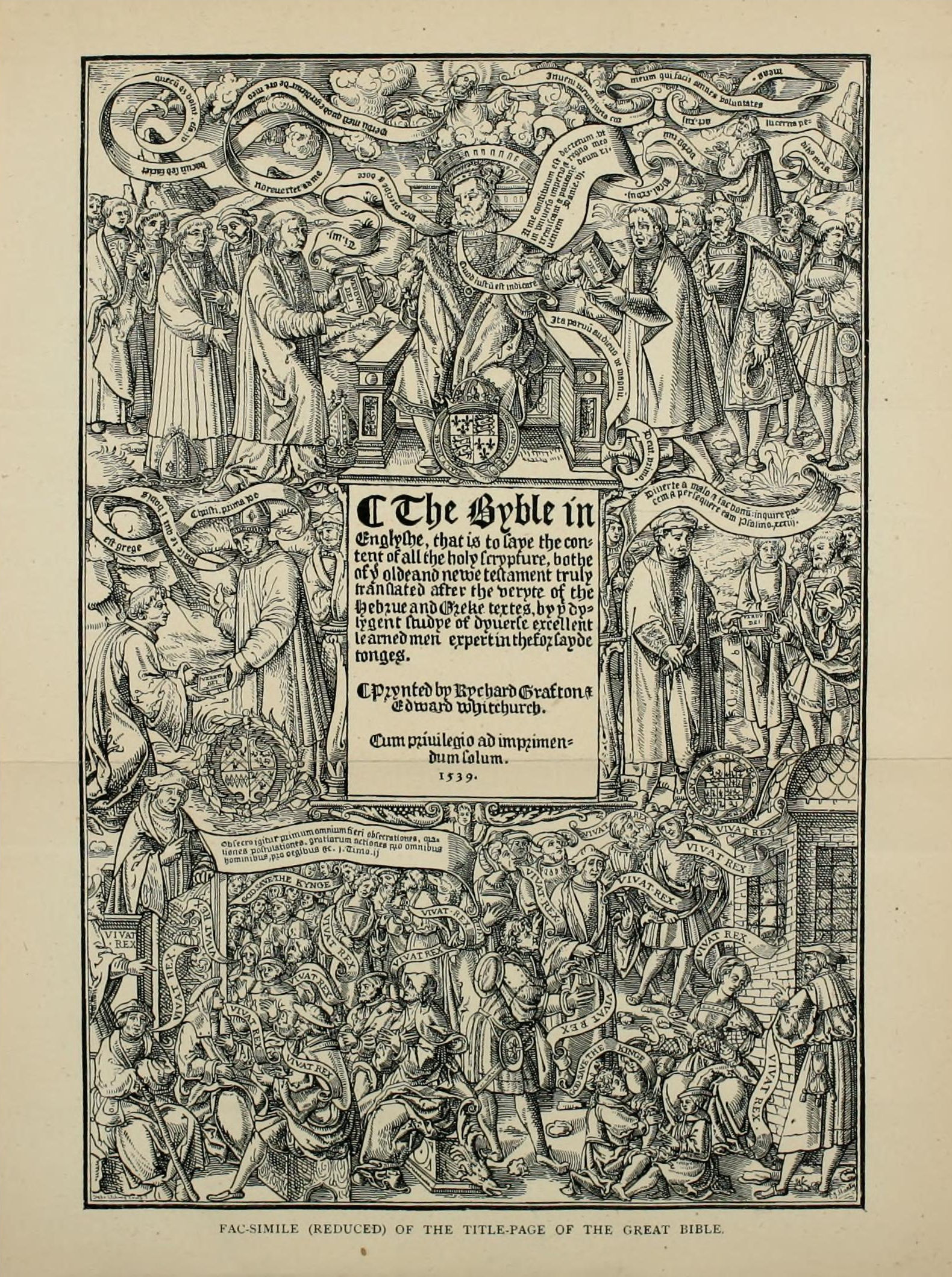
| Bible Research > English Versions > Great Bible > Title Page |
The following description of the title page of the Great Bible (1539) is from The History of the English Bible, by the Rev. W.F. Moulton (London: Cassell Petter and Galpin, 1878) pp. 138-9.
The title-page, said to have been designed by the celebrated Hans Holbein, is curious and very interesting. ... The highest figure in the engraving represents the Lord Christ in the clouds of heaven. Two labels contain His words. On that which extends towards the left of the engraving we find Isa. lv. 11 (Verbum meum, &c.). The other is directed towards the king, who, having laid aside his crown, and kneeling with outstretched hands, receives the declaration, “I have found a man after mine own heart, which shall fulfil all my will” (Inveni, &c.. Acts xiii. 22); and himself exclaims, “Thy word is a lamp unto my feet” (Ps. cxix. 105). The king appears again as the most prominent of all the figures. Now he is seated on his throne: the royal arms and motto will be recognised at once. The king hands the word of God (Verbum Dei) to bishops and clergy on his right hand, to Cromwell and others of the laity on his left. To the former he says, Haec praecipe et doce (“These things command and teach,” 1 Tim. iv. 11): to the latter, Quod justum est judicate, ita parvum audietis ut magnum (“Judge righteously ... ye shall hear the small as well as the great,” Deut. i. 16, 17); and also words taken with slight alteration from Dan. vi. 26, “I make a decree ... fear before the living God.” Below, on the right, Cromwell appears a second time, pointed out by the device and motto at his feet: he is delivering the Word of God to the laity, admonishing them in the words of Ps. xxxiv. 14. On the other side is Cranmer, clearly indicated by his costume and his arms, placing the sacred volume in the hands of one of his clergy, and solemnly repeating the charge of 1 Peter v. 2. Below stands a preacher, enforcing the duty of prayer and thanksgiving on behalf of kings (1 Tim. ii. i). The chorus of joy and thankfulness expressed in the attitude of the king’s lieges, no less distinctly than in the shouts of “Vivat Rex,” and “God save the king,” needs no comment. Prisoners look wistfully from their cells; but whether they are introduced as wondering at the commotion, or as sharers in the joy, or as affording in their own persons a warning that such punishment awaited all undutiful subjects, it is not easy to decide. Many smaller features of this remarkable composition well deserve a careful examination. It represents, with great faithfulness, a page of the history of the times. That the precious boon now conferred was the result of no human contrivance, is thankfully acknowledged here, and in the imprint even more clearly still: A Domino factum est istud (“This is the Lord’s doing”) are the translator’s pious words, in which the devout student of history will heartily unite.
| Bible Research > English Versions > Great Bible > Title Page |